Positional Veritgo and Home Treatment
*This post may contain affiliate links, which means I may receive a small commission, at no cost to you, if you make a purchase through a link.
Positional vertigo (dizziness) can be a very scary condition. It is usually a surprise the first time it happens. It can last several seconds or become a constant condition. Constant vertigo will lead to other symptoms including nausea, headaches, visual problems or tinnitus. Positional vertigo is brought on by turning your head in a way that delays inner ear positional proprioceptors causing them to not function correctly. For example: bending down to pull out a pot or pan can cause your body to not know when to stop bending over. Next thing you know you’re either on the floor or hopefully catching yourself. Another example I most commonly hear is feeling dizzy when rolling over in bed.
In our middle-inner ears, we have three semi-circular canals which looks like a roller coaster. These three canals house microscopic hairs that have cristaes (crystals) attached to the tip. These hairs and crystals are what allow us to know where we are when in motion. When these cristaes break and detach from their hairs, gravity is supposed to force them to drop to the bottom of the semi-circular canal. It’s when the crystals get caught up in the canal that vertigo symptoms occur.
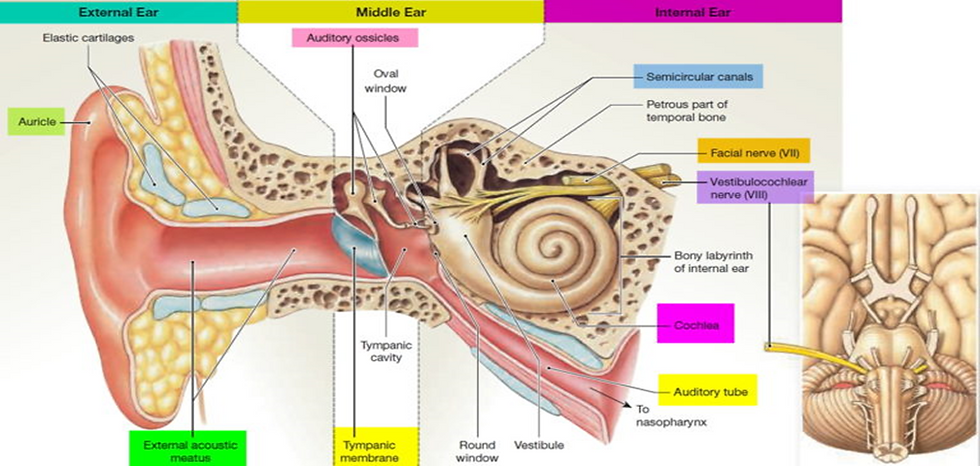
The medical diagnosis for this is called Benign Paroxysmal Positional Vertigo (BPPV). It is the result of either the aging process, loud noises or trauma to the inner ear. There are a few similar techniques to re-position the crystals to relieve the vertigo symptoms. It is best to have someone else assist you with these techniques. Firstly, to make sure you are safe if you have a vertigo episode while performing the re-positioning. And secondly, to make sure you are doing it correctly.
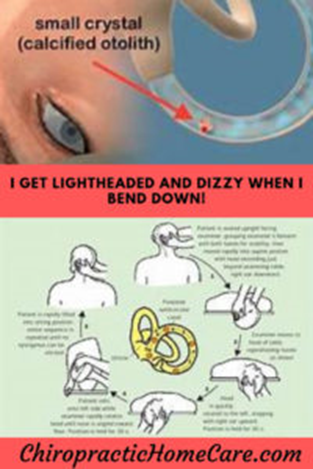
How do you even know if you have BPPV? Sometimes it’s not so obvious. One of my clients had vertigo symptoms just by opening her eyes. Her optometrist and audiologist both diagnosed her with BPPV.
One of the classic signs for BPPV is having nystagmus. Which is defined as having rapid involuntary movements of the eyes. Not all BPPV sufferers will have nystagmus so try the re-positioning protocol anyway. There are several common differential diagnosis including; medication side effects, high blood pressure, altitude sickness, head trauma within the last 6 months, inflammation of the vestibular nerve, ear infection or swelling of the inner ear or Meniere disease.
Meniere’s Disease has additional signs including tinnitus, hearing loss, pressure in the ears. Most likely if you’ve been to your M.D., Optometrist, or Audiologist, they will have already recognized and diagnosed you with Meniere’s.
Before I explain the re-positioning protocol let us go over the pre & post-care. Because you are going to be so excited to try this technique to get relief that you won’t want read the rest of this article. (Or maybe that's just me and I say this from personal experience!)

Pre-Treatment: If you’re doing this in a doctor's office (including a chiropractor) it is best if you have someone to drive you home. Discuss all health issues, especially history of high blood pressure, detached retina, muscular skeletal neck & back problems. Wear light fitting casual clothes as you will be turning and rolling over on treatment table. Allow your body to relax in each position, especially your neck. Allow the assistant to gently move your neck as the crystal's re-position.
Post-Treatment: You may or may not be dizzy after the treatment and it may be required to have someone drive you. Consider using Uber/Lift/Taxi alternative.
Secondly, you must keep your head and upper body upright for the first 48 hours. Looking down to brush your teeth or bending down to pull out cookware, etc can cause the crystals to shift. Elevate your upper body 30-45 degrees when sleeping by putting a foam wedge under your upper body so you are not sleeping completely horizontal. A recliner chair could be ideal in this situation.
I love this wedge for vertigo and acid reflux.
Re-Positioning Protocol for the Left Ear:
Start by having the patient (you) sit on a bed or table with legs straight out. Your buttocks should be high enough on the table so when you lay down your head will be 20° off the table.
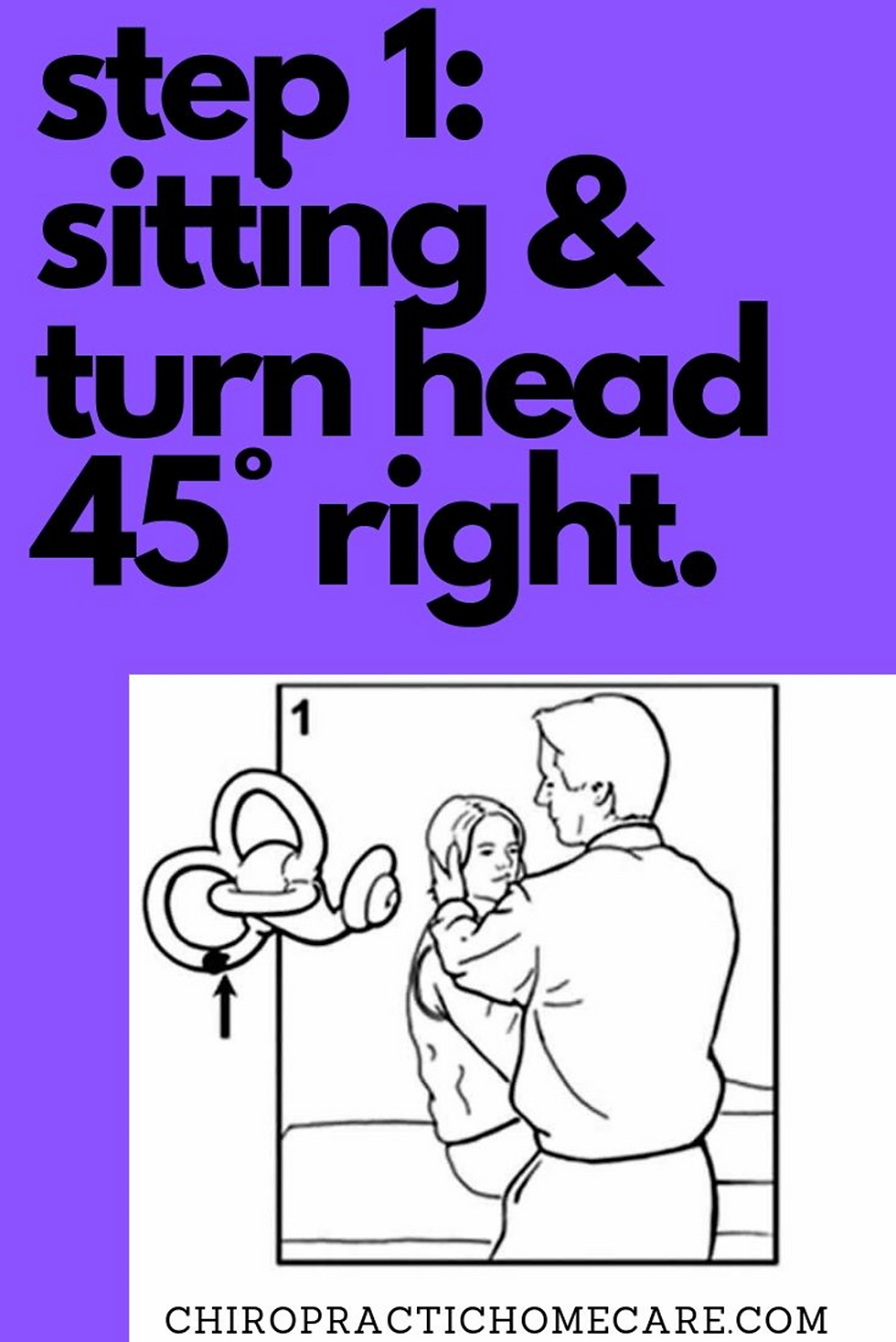
Second, lay down flat on your back with your head hanging off the table. If you have someone helping you, they can support the weight of your head. Next turn (not bend) your head 45° to the left. Wait for nystagmus and any other symptoms to disappear.

Third, while keeping your head extended 20°, turn to look to the opposite side to 45°.
Wait for nystagmus and any other symptoms to disappear.
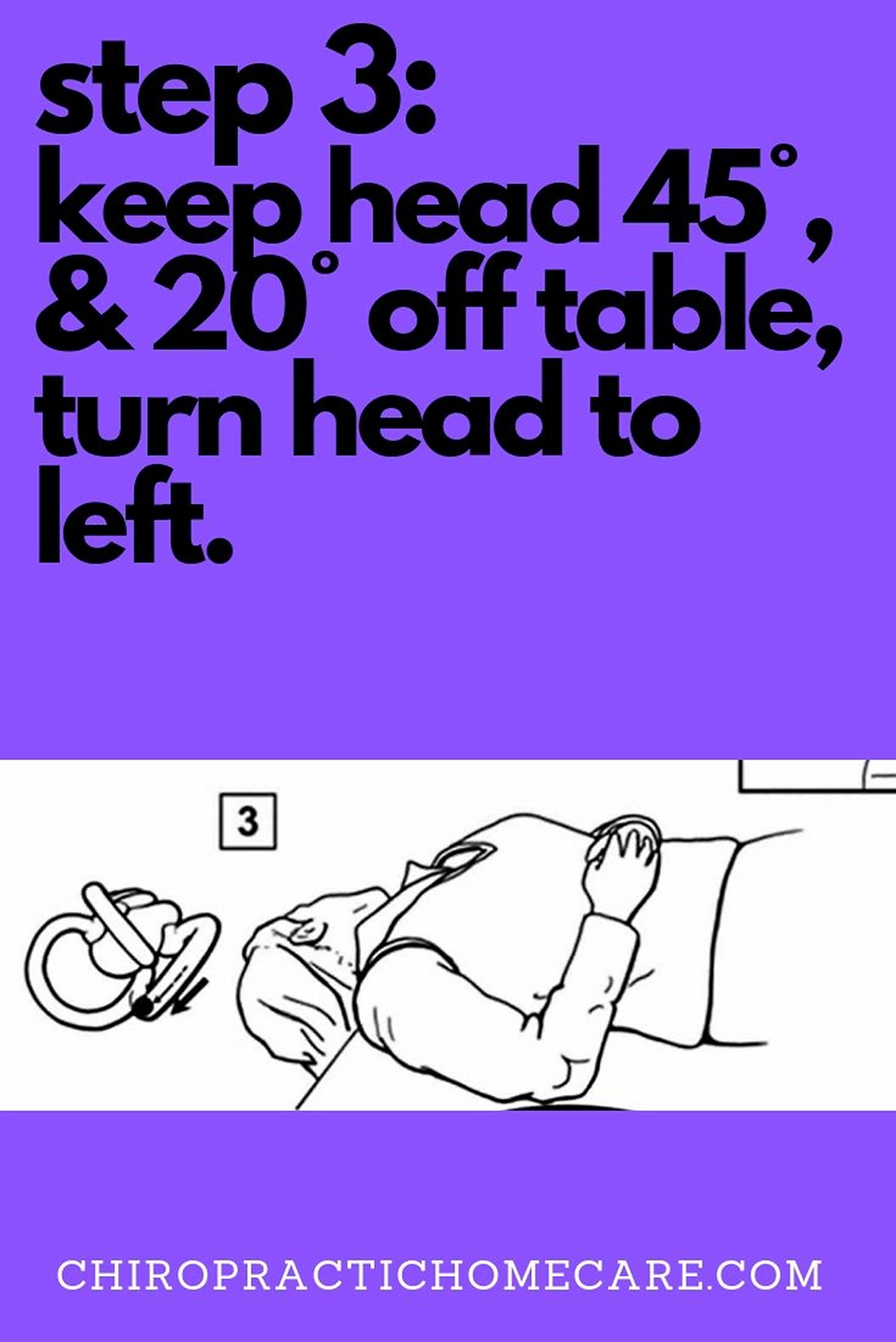
Next, roll almost face down, about 135° to the side you are facing (right).
Wait for nystagmus and any other symptoms to disappear.
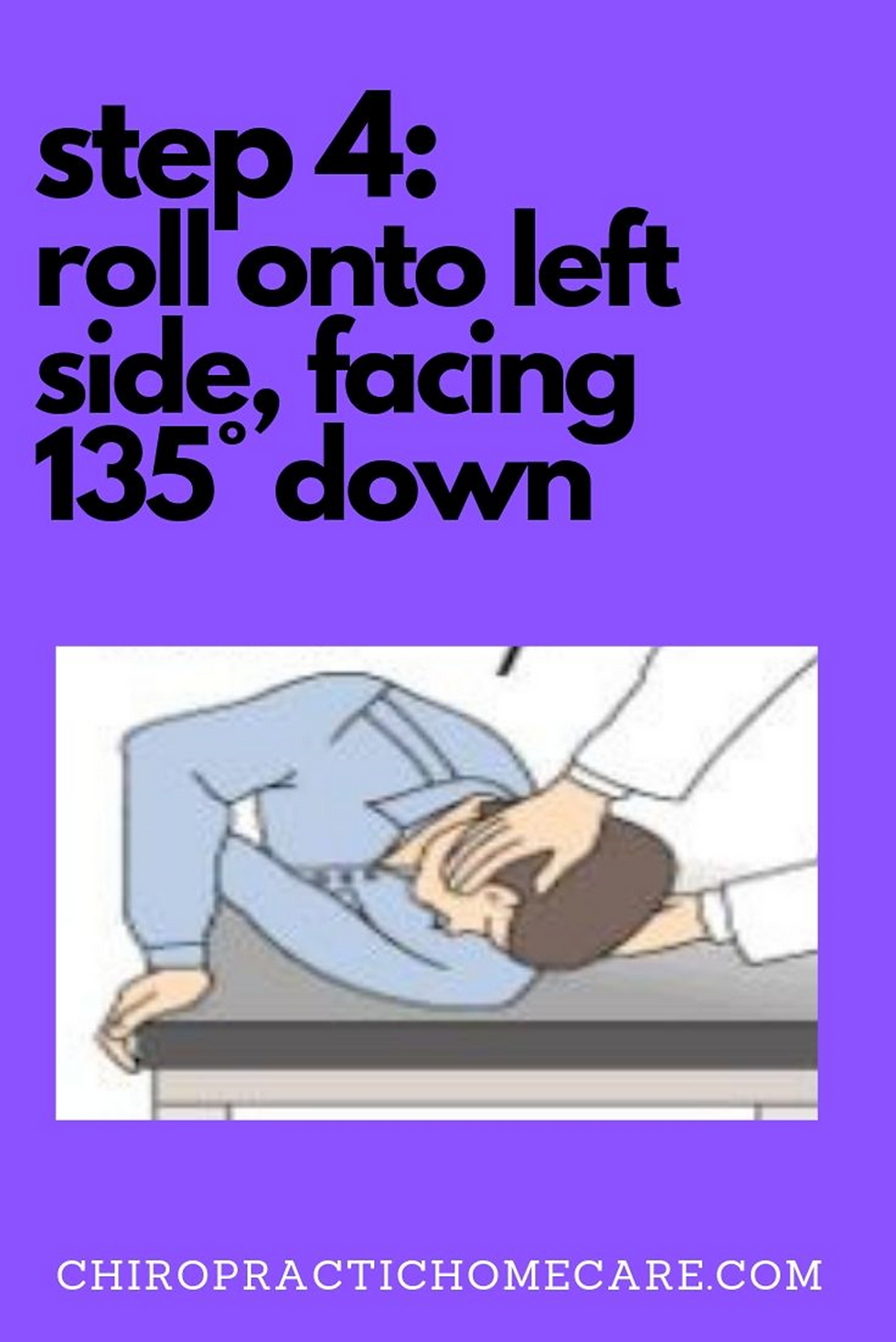
Last, while continuing to look 45° to the right and sit up with legs extended out in front of you. After sitting up, immediately look forward and tilt your head slightly forward.
Wait for nystagmus and any other symptoms to disappear.
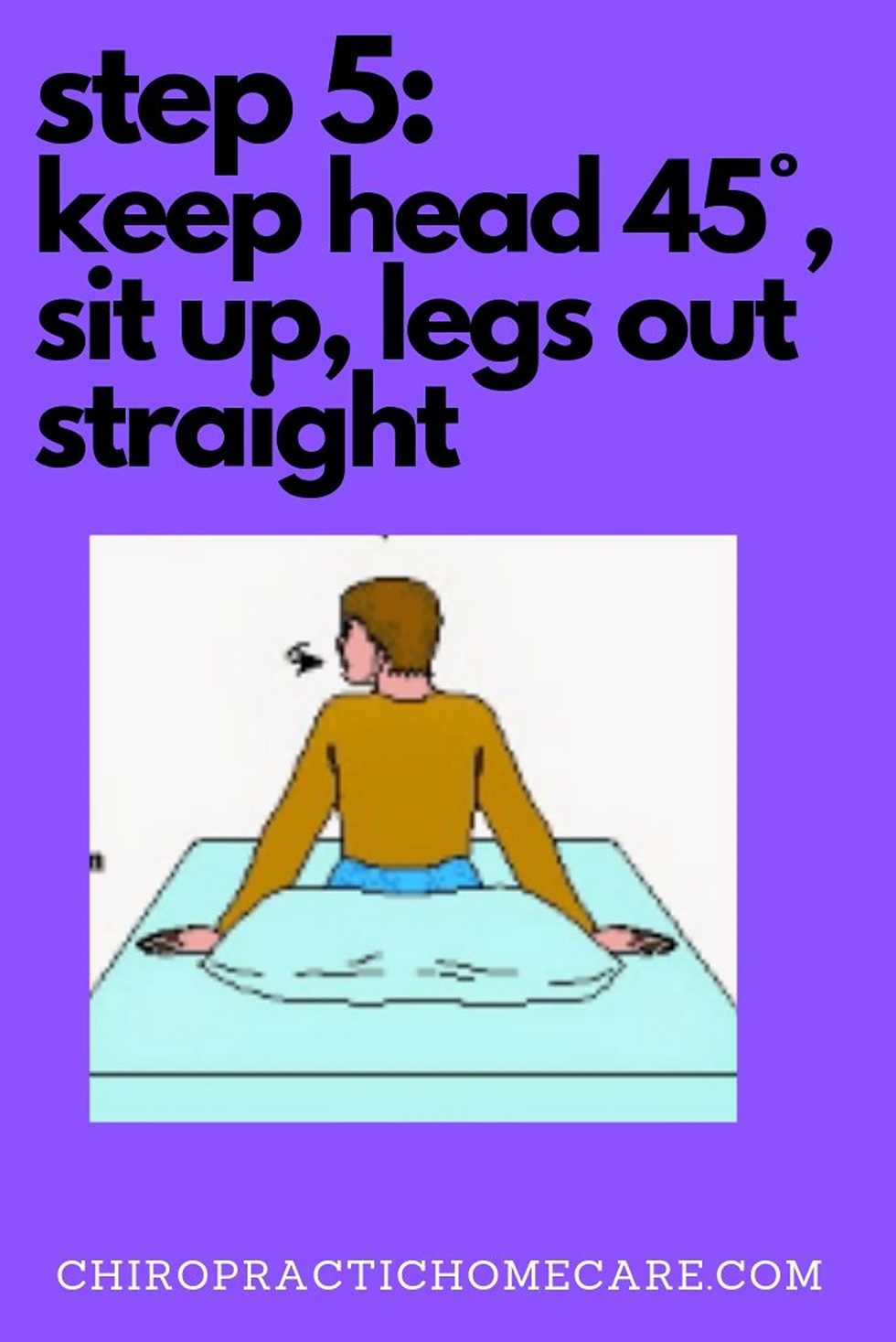
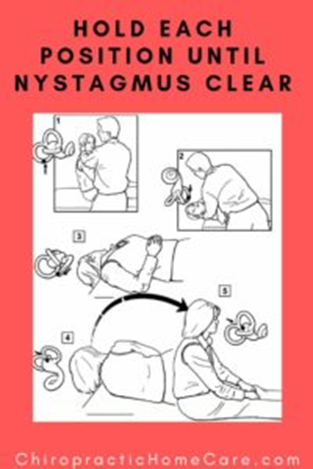
Relax for a few minutes then do this whole process in the opposite positions for the RIGHT EAR.
Re-Positioning Protocol for the Right Ear
Start by having the patient (you) sit on a bed or table with legs straight out. Your buttocks should be high enough on the table so when you lay down your head will be 20° off the table.
Second, lay down flat on your back with your head hanging off the table. If you have someone helping you, they can support the weight of your head. Next turn (not bend) your head 45° to the right.
Wait for nystagmus and any other symptoms to disappear.
Third, while keeping your head extended 20°, to look to the opposite side (left) to 45°. Wait for nystagmus and any other symptoms to disappear.
Next, roll almost face down, about 135° to the side you are facing (left).
Wait for nystagmus and any other symptoms to disappear.
Continue looking 45° to the left and sit up with legs extended out in front of you.
After sitting up, immediately look forward and tilt your head slightly forward.
Again, wait for any symptoms to disappear or subside.
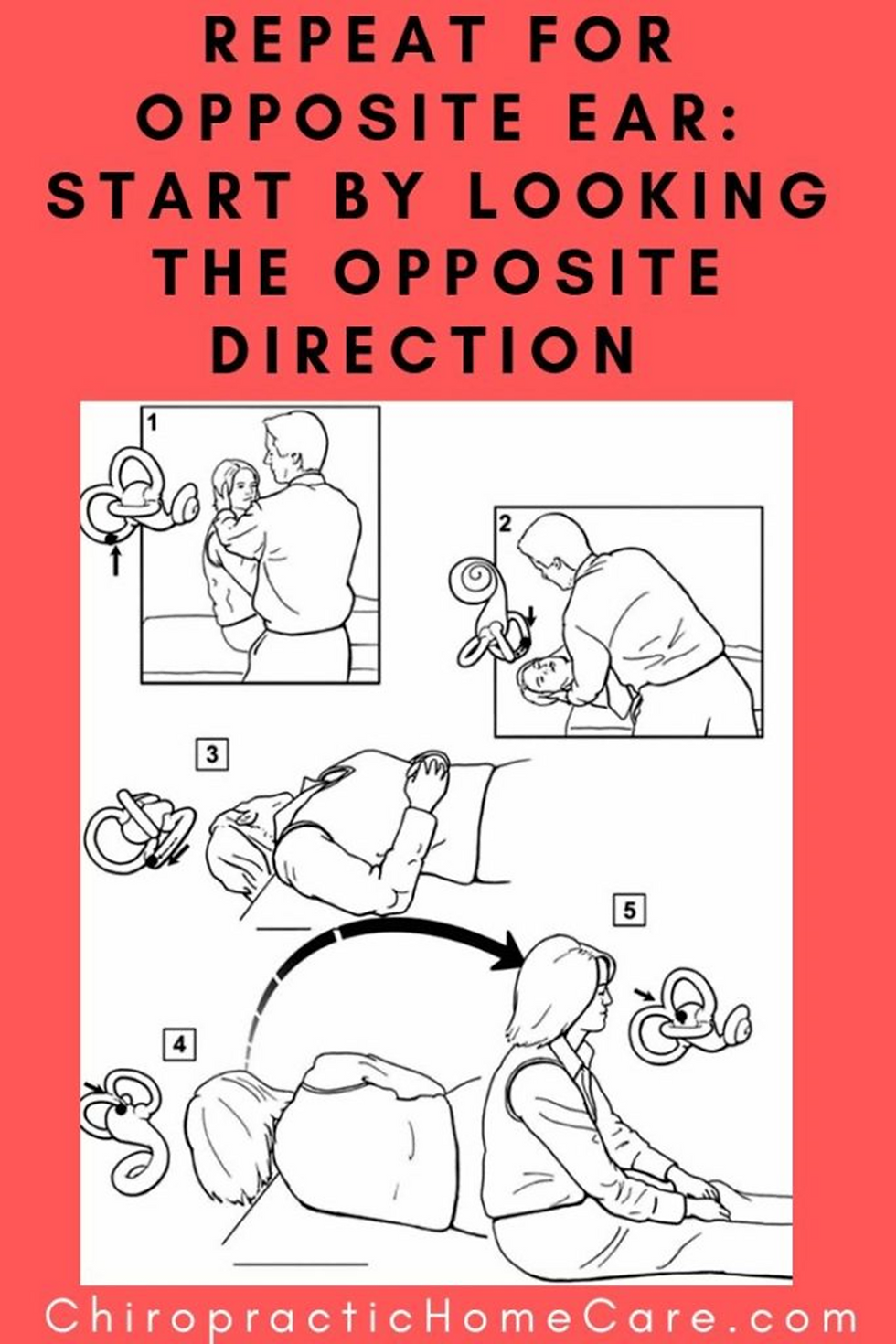
Repeat for left and right side 2 more times.
Follow Post-Treatment Directions.
Follow up with the practitioner who helped you with this.
Random Tips: Stay away from foods that make you retain water or feel bloated (salt, yeast).
Avoid activities that are fast, body jarring (trampolines, amusement rides, speed racing, bumper cars, some sports, etc). Avoid bending over for 12-24 hours after this treatment. Even just leaning over to brush your teeth can cause the crystals to get caught back into the circular canals.
For the link to Pillow Wedge (Amazon) click on this picture. There are many to choose from on Amazon, Walmart, Target, etc.


Comments